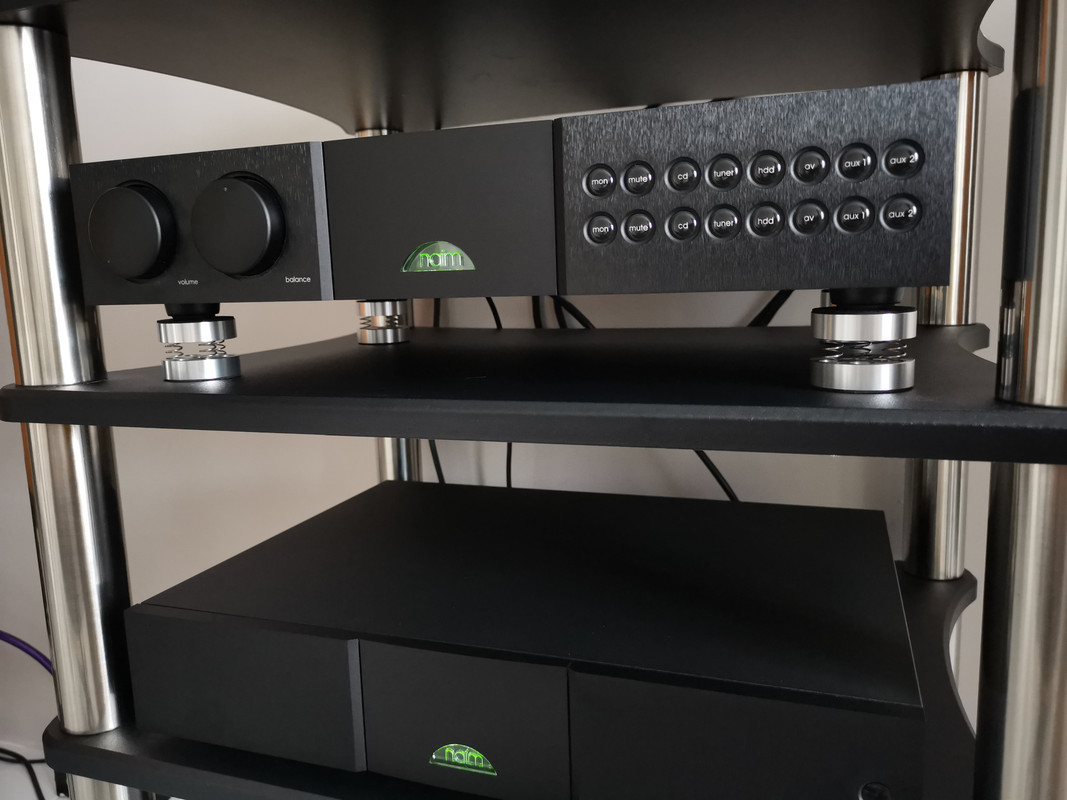Some thoughts based on my experience meanwhile. I have Nobsound springs under my Streamer/DAC, my heavy mono blocks (44 kg each) and my Powerfilter unit. My initial attempt with the DAC (~12.5 kg) was with 3 units with 3 springs each, as this was the least number of springs per unit that I thought was stable in itself. This results in a situation where the Nobsounds don't compress much. The hearing result was intimidating: added sharpness, less resolution and less dynamics.
I then tried to use less springs and ended up with 4 units with 1 spring per unit. At least for the 12kg DAC this is still stable enough. On one side (where the transformers sit), I have two springs. In total this results in a situation where all units are compressed about equally and about 50% (gap of the unit compared to uncompressed, by rough eyesight). The acoustic result is great and I kept the springs since then: Instruments appear to resonate more freely, there is more room, and bass apears to reach deeper. The number of springs corresponds nicely to the rule of thumb mentioned in the OP (2.5kg per spring). For me this is helpful to determine at least a starting point for finetuning by listening.
For the monoblocks, the result of adding the springs is very similar and synergetic to the DAC. Under the power filter, the effect is the least. I would not claim that it would withstand a blind test, but I kept the springs there for optical reasons.
I really like the ideas of dampening the springs with foam ear plugs and/or PTFE tape. I will definitely try (on my DAC first).



